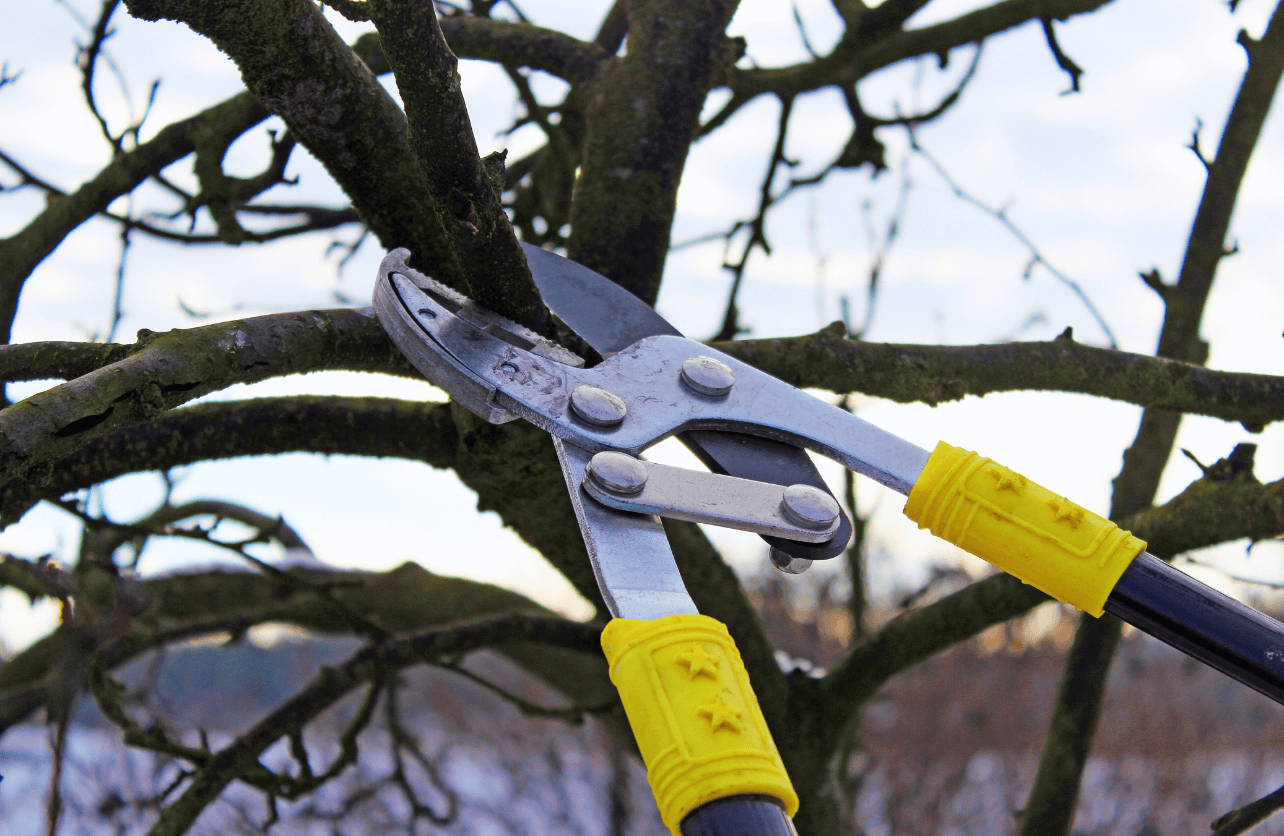How to Prune Apple Trees

View all Contents
Pruning apple trees is a crucial practice that promotes healthy growth, enhances fruit production, and maintains the desired shape of the tree. Whether you’re cultivating a small backyard orchard or caring for a single tree, proper pruning techniques will ensure your apple tree remains productive and vigorous. This guide will walk you through the steps and best practices for pruning apple trees effectively.
Why Pruning Is Important
- Promotes Healthy Growth: Removes dead, diseased, or damaged branches, reducing the risk of pests and diseases.
- Enhances Fruit Production: Encourages the growth of new fruiting wood and improves fruit size and quality.
- Improves Air Circulation and Sunlight Penetration: Reduces fungal diseases and helps fruits ripen evenly.
- Controls Tree Shape and Size: Makes harvesting easier and prevents the tree from becoming too large for its space.
When to Prune Apple Trees
- Dormant Season: The ideal time to prune is late winter to early spring (January to March), when the tree is dormant and before new growth begins.
- Avoid Late Spring and Summer: Pruning during active growth can stress the tree and expose it to diseases.
- Minor Summer Pruning: Light pruning to remove water sprouts or suckers can be done in summer if necessary.
Tools You’ll Need
- Pruning Shears: For small branches up to ½ inch in diameter.
- Lopping Shears: For medium branches up to 2 inches in diameter.
- Pruning Saw: For larger branches over 2 inches in diameter.
- Gloves and Safety Gear: Protects hands and eyes from injury.
- Disinfectant: To sterilize tools between cuts, preventing disease spread.
Steps to Prune Apple Trees
1. Assess the Tree
- Observe Structure: Identify the central leader (main vertical stem) and scaffold branches (primary limbs).
- Look for Problems: Note any dead, diseased, or damaged branches that need removal.
2. Remove Dead, Diseased, or Damaged Wood
- Dead Wood: Cut back to healthy tissue or remove entirely.
- Diseased Wood: Remove infected branches to prevent spread.
- Damaged Wood: Prune broken or split branches cleanly.
3. Eliminate Suckers and Water Sprouts
- Suckers: Shoots growing from the base or roots; remove completely.
- Water Sprouts: Vigorous, upright shoots on branches; prune them out.
4. Thin Out Crowded Branches
- Crossing Branches: Remove one of the branches to prevent rubbing wounds.
- Dense Areas: Thin out to improve light penetration and airflow.
5. Maintain the Central Leader
- Encourage Upright Growth: Ensure one central leader remains dominant.
- Competing Leaders: Remove any secondary vertical branches.
6. Shape the Tree
- Scaffold Branches: Select well-spaced branches around the tree, ideally in a spiral pattern.
- Branch Angles: Aim for branches at a 45 to 60-degree angle from the trunk for strength.
7. Make Proper Cuts
- Cut at the Right Place: Prune just above a bud that’s facing the direction you want new growth.
- Angle of Cut: Make a slanted cut away from the bud to shed water.
- Avoid Stubs: Don’t leave long stubs that can invite decay.
Pruning Young Apple Trees (Years 1-3)
- Year 1:
- Initial Pruning: After planting, cut the tree back to 24-30 inches to encourage lower branching.
- Year 2:
- Select Scaffold Branches: Choose 3-5 branches evenly spaced around the tree.
- Remove Competing Shoots: Prune out unwanted vertical growth.
- Year 3:
- Establish Structure: Continue to shape the tree, maintaining the central leader and scaffold branches.
Pruning Mature Apple Trees
- Annual Maintenance: Remove any dead, diseased, or damaged wood each year.
- Renewal Pruning: Remove older, less productive branches to stimulate new growth.
- Control Height: Prune back the top of the tree to maintain a manageable size.
- Thin Fruit Spurs: If overcrowded, thin out fruiting spurs to improve fruit quality.
Common Pruning Techniques
- Heading Cuts: Shorten a branch to a bud to encourage bushier growth.
- Thinning Cuts: Remove an entire branch back to its point of origin to open up the tree.
- Bench Cuts: Remove upward-growing branches in favor of outward-growing ones.
Tips for Successful Pruning
- Disinfect Tools: Clean tools with a bleach solution or alcohol between cuts to prevent disease.
- Use Sharp Tools: Sharp blades make clean cuts that heal quickly.
- Don’t Over-Prune: Remove no more than 20-30% of the tree’s canopy in a year.
- Observe the Tree: Adjust your pruning approach based on how the tree responds over time.
- Safety First: Be cautious when working with ladders or overhead branches.
After Pruning Care
- Clean Up Debris: Remove pruned branches and dispose of them properly.
- Monitor for Pests and Diseases: Keep an eye on the tree for any signs of issues.
- Fertilization: Apply a balanced fertilizer in early spring to support new growth.
Shortcuts at a Glance
- Best Time to Prune: Late winter to early spring.
- Tools Needed: Pruning shears, loppers, pruning saw, gloves.
- Key Steps:
- Remove dead, diseased, or damaged wood.
- Eliminate suckers and water sprouts.
- Thin crowded branches.
- Shape the tree by maintaining the central leader and scaffold branches.
- Tips:
- Disinfect tools between cuts.
- Avoid over-pruning.
Meta Description: